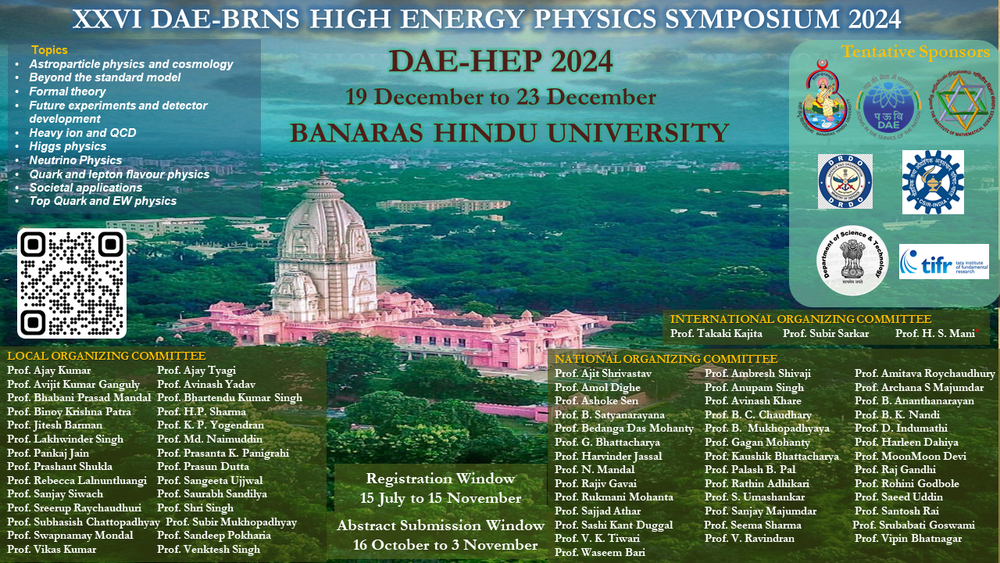Speaker
Description
The study of hadron production containing charm or beauty quarks in proton-proton (pp) collisions provides essential insights into the predictions of perturbative quantum chromodynamics (pQCD). The ALICE detector allows for precise measurements of non-prompt D-meson production, which serves as an effective tool to explore the production of beauty quarks in pp collisions.
This analysis presents recent results on the transverse momentum ( $p_\text{T}$ )-differential production cross section for D mesons originating from beauty-hadron decays (referred to as non-prompt D mesons). These findings are compared with those for prompt D mesons produced directly in pp collisions at center-of-mass energies of ( $\sqrt{s}$ = 5.02 ) TeV and ( $\sqrt{s}$ = 13 ) TeV. Additionally, the ( $p_\text{T}$ )-differential production yield ratios, such as non-prompt ( $D^+/D^0 $ ) and ( $D_s^+/(D^0 + D^+)$ ), are examined, along with measurements of the fragmentation fraction ratio of beauty quarks into strange and non-strange B mesons in pp collisions, to assess their universality across different collision systems. Comparisons with pQCD predictions and other theoretical models are also included. A machine-learning-based multiclass classification algorithm is employed to distinguish D mesons arising from beauty-hadron decays for these measurements.
| Field of contribution | Experiment |
|---|

